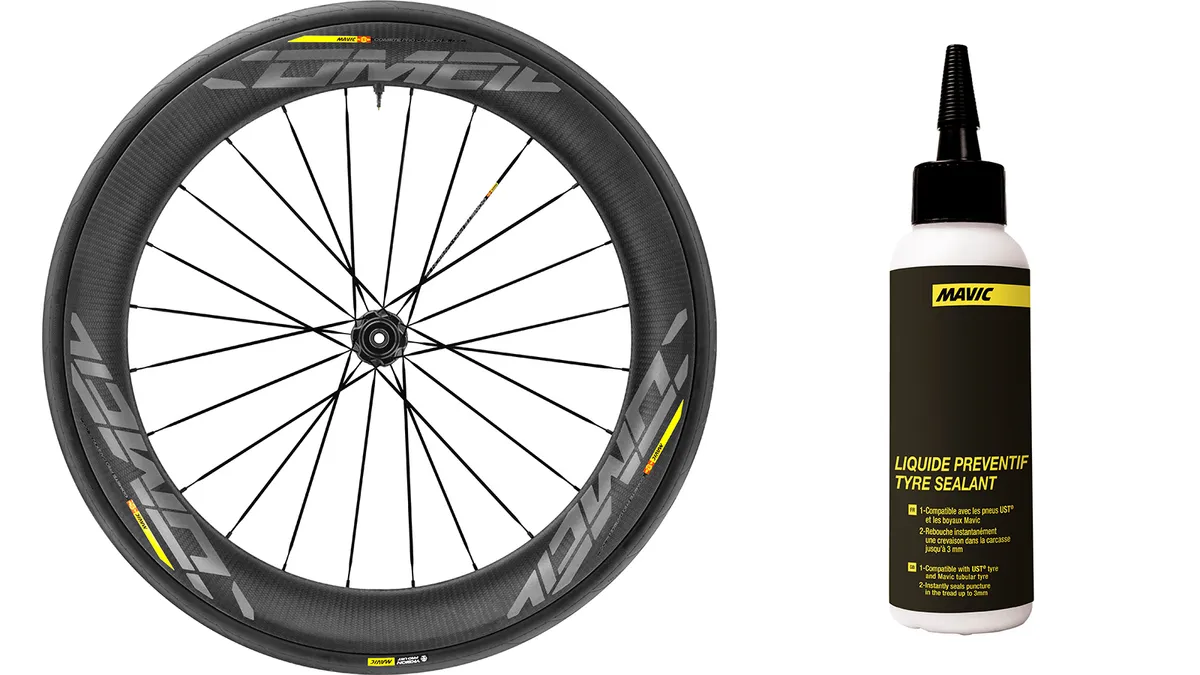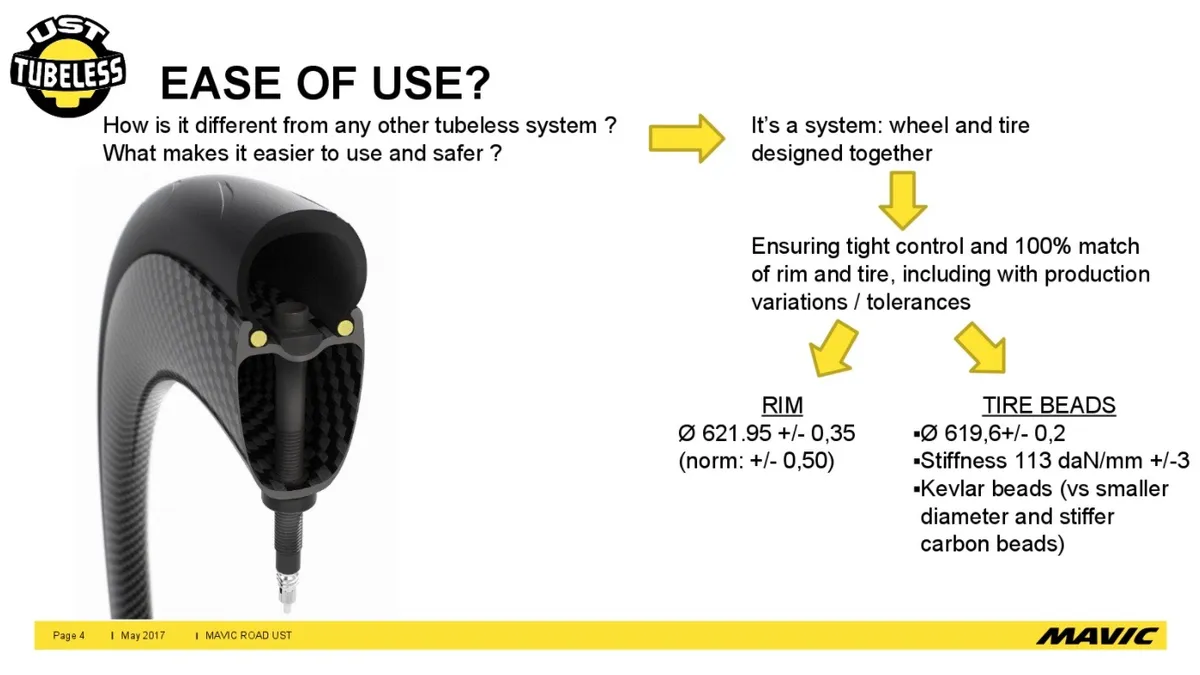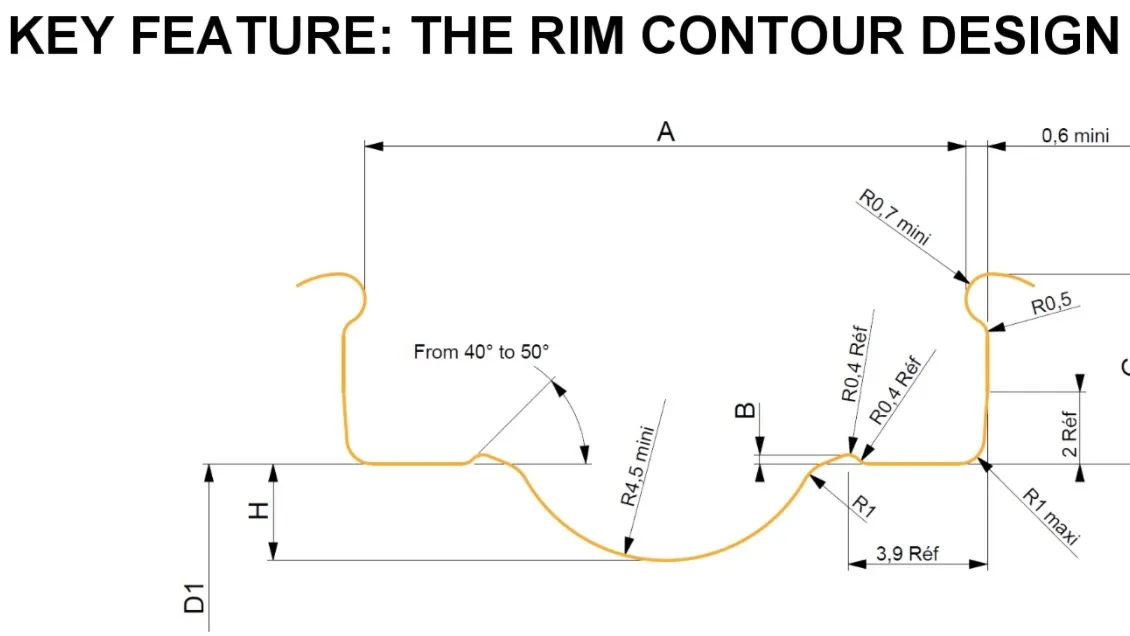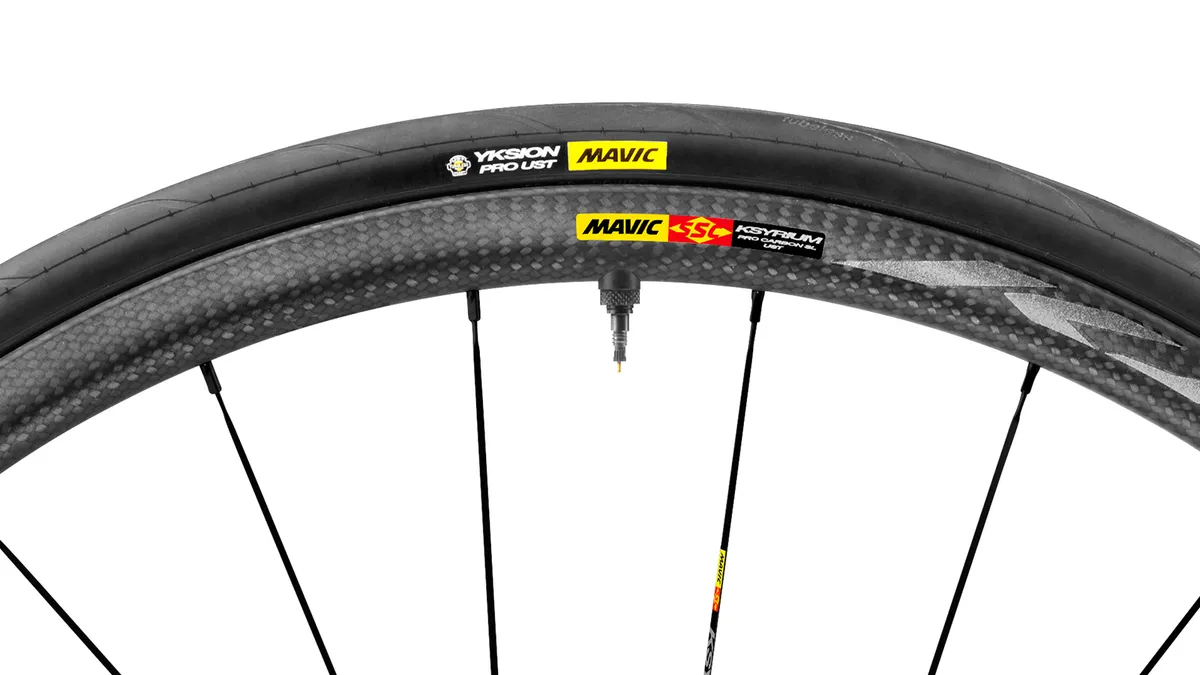Although Mavic co-launched Universal System Tubeless (UST) for mountain bikes in 1999 with Hutchinson and Michelin, the French brand took a long, cautious road to road tubeless. Today, however, Mavic launched Road UST as a wheel/tire system, claiming that its system is safer and easier to use than its competitors because of the internal rim shape and tight tolerances of the wheels and tires.
The new Mavic Road UST wheels include carbon and aluminum models of the Comete, Cosmic Ksyrium lines, plus the gravel/adventure Allroad wheels that launched earlier as tubeless. The first three wheel families are Mavic's first true high-pressure road tubeless models.
In the early 2000s, Mavic, Michelin, Hutchinson and Shimano all worked on road tubeless designs. Ultimately, Mavic and Michelin decided to hold off, while Hutchinson and Shimano charged ahead. Today, most major wheel companies have dedicated tubeless offerings, but there are still some notable tire holdouts, including Continental, which do not have road tubeless models.
A primary cause of reluctance for some — including Continental and Mavic — has been the lack of a precise standard regarding how the tire and rim interface. Mavic solved this problem by designing both elements.

Mavic intends its new Road UST wheels to be used with its new Yksion Pro UST tires, which come in 25 and 28mm widths. Mavic touts the pliable nature of the Kevlar beads and the grip and low-rolling resistance of the new rubber compound. That is fairly expected from any brand. What is surprising is that Mavic goes a step further, cautioning that using a non-Mavic tubeless tire on the new Mavic Road UST wheels can be "harder to use or unsafe" — as can other brands of road tubeless wheels and tires in general.
At BikeRadar we cannot speak definitively to the safety of one design over another, but we can attest to the fact that some tubeless wheel/tire pairings can indeed be difficult to mount and unmount.
Tall sidewalls, deep tire bed — and details on those tolerances
Mavic claims its Road UST system can be set up with a standard floor pump, thanks to the rim design and tight tolerances on not only the tire bead's diameter but also its stretch.
Mavic says its rims' internal diameters are manufactured to 621.95mm, +/-0.35, and the tire beads to 619mm, +/-0.2. The normal European Tire and Rim Technical Organisation (ETRTO) standard for allowable rim variance is +/-0.5mm. There is no ETRTO standard for tires — only that tire manufacturers ensure that their products work with ETRTO wheels.

Mavic tested the Schwalbe Pro One tubeless tire — which we found to be the fastest in our third-party lab testing — on wheels that where on the outer limits of the ETRTO +/-0.5mm variation allowance, plus one that was exactly 621.95mm. Mavic claims the Pro One was okay to mount and inflate on a smaller wheel, but impossible to mount without levers on a 621.85mm wheel and impossible to mount period on a 622.45mm rim.
In addition to the tighter tolerances, Mavic's Road UST wheels feature tall (5.2mm) sidewalls, a deep (4.5mm) tire channel in the rim to make mounting easier, and then a little (0.25mm) ridge separating the tire channel from the rim bed to prevent a flat tire from coming off.
Varying internal rim widths
Internal rim width is a big talking point for many wheel companies these days, with wider usually being touted as better. Mavic contends that rim width should be appropriately matched with tire width, so its internal measurements range from 17mm for the Kysrium Pro rim-brake rim, on up through 19mm for the Ksyrium Pro disc, and topping out at 22mm for the Allroad Pro designed for gravel tires.
Claims: 15% faster and 40g lighter than comparable clincher set-up
Like other brands with rubber in the tubeless game, Mavic claims that going from a clincher and tube to a comparable tubeless tire and sealant is fastest in terms of lab-measurable rolling resistance. Based on our studying of tires of the years, and our commissioned testing at Wheel Energy in Finland, we can accept this to be true.
Mavic claims its system is 15% faster than a comparable clincher with tube. Further, by dropping air pressure by 15psi, the tubeless system is still 5% faster than a clincher and tube, Mavic claims.
Mavic also claims that the Road UST system is about 40g lighter than its clincher-and-tube systems.

Mavic Road UST US pricing, weight and availability
- Comete Pro Carbon SL Disc–$1899, €1899, 1755 grams (available Q3)
- Comete Pro Carbon SL–$1799, €1799,1635 grams (available Q3)
- Cosmic Pro Carbon SL Disc–$1899, €1899, 1570 grams (available Q3)
- Cosmic Pro Carbon SL–$1799, €1799, 1450 grams (available Q3)
- Cosmic Elite Disc–$499, €475, 1770 grams (July availability)
- Cosmic Elite–$449, €449, 1850 grams (July availability)
- Ksyrium Pro Carbon SL Disc– $1899, €1899, 1510 grams (available Q3)
- Ksyrium Pro Carbon SL– $1799, €1799, 1390 grams (available Q3)
- Ksyrium Pro Disc–$1099, €999, 1620 grams (July availability)
- Ksyrium Pro–$999, €949, 1420 grams (July availability)
- Ksyrium Elite Disc–$799, €649, 1690 grams (July availability)
- Ksyrium Elite–$699, €600, 1520 grams (July availability)
- Allroad Pro Disc–$1099, €999, 1660 grams (available Q3)
- Allroad Elite Disc–$799, €749, 1720 grams (available Q3)
- Allroad Elite RB (rim brake)–$799, €699, 1600 grams (available Q3)
- Open Pro Disc–$99, €69, 420 grams (available Q3)
- Open Pro–$99, €69 420 grams (available Q3)
- Yksion Pro UST tire–$69, €59, 260 grams

